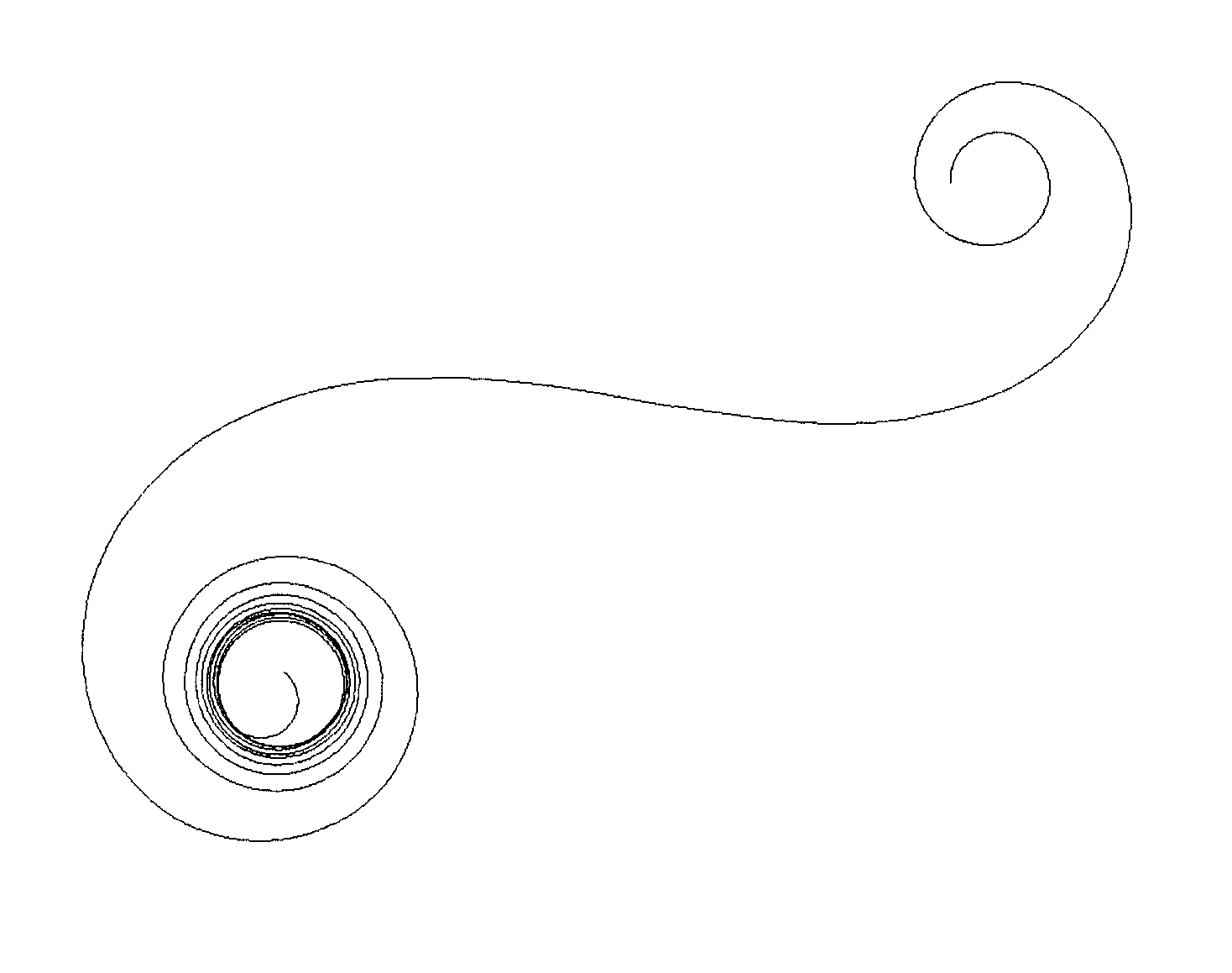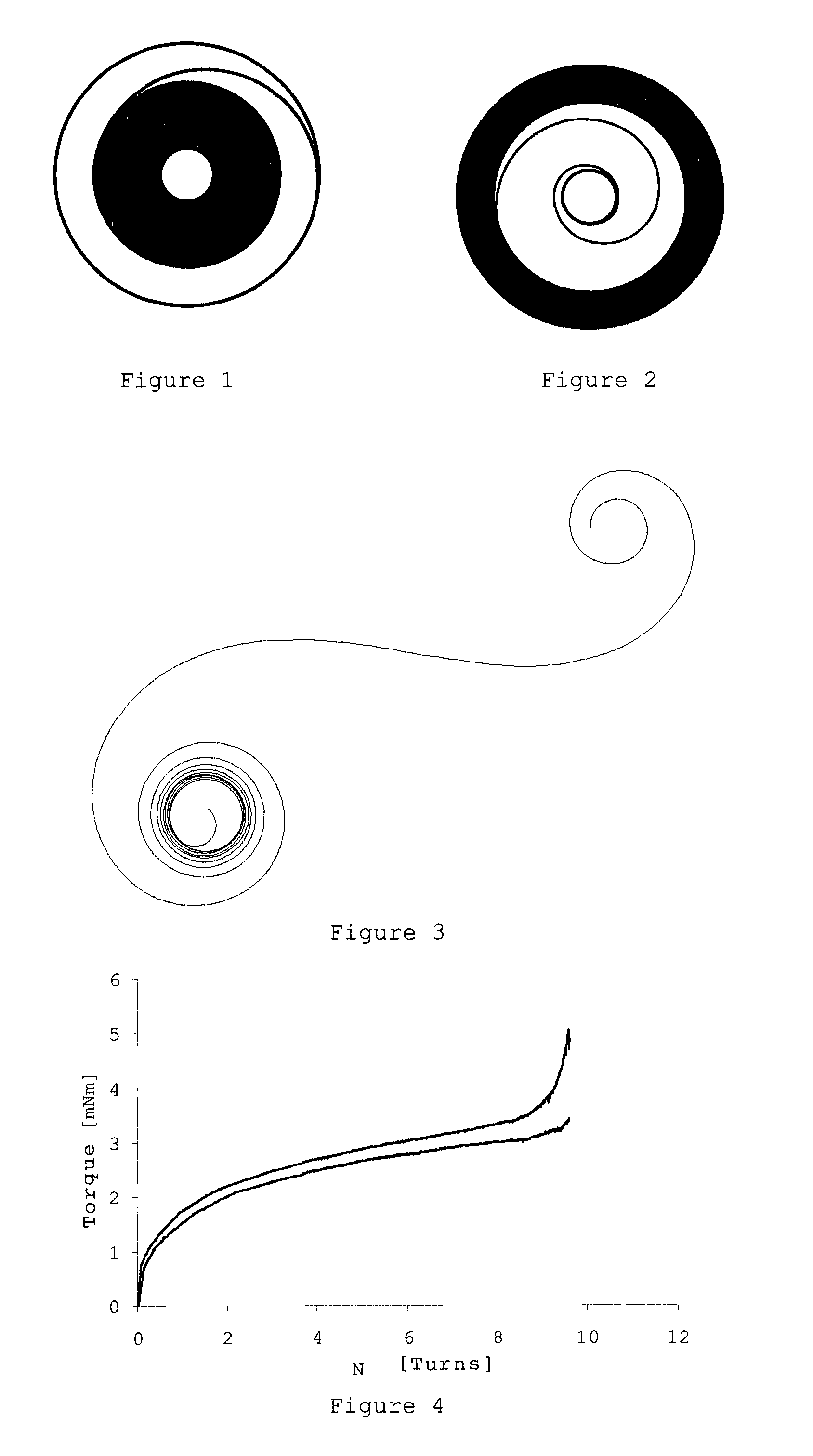Mainspring
a mainspring and spring technology, applied in the field of mainsprings, can solve the problems of high risk of delamination of laminates during forming operations, unreliable elasticity of springs, and theoretical shape of springs that do not take into account the behavior of laminated materials, etc., and achieve the effect of increasing the 2/e ratio, increasing the density of elastic energy, and constant torqu
- Summary
- Abstract
- Description
- Claims
- Application Information
AI Technical Summary
Benefits of technology
Problems solved by technology
Method used
Image
Examples
Embodiment Construction
[0022]In the example given below, the ribbons intended to form the mainsprings are produced by using the quench wheel technique (also called planar flow casting), which is a technique for producing metal ribbons by rapid cooling. A jet of molten metal is propelled onto a rapidly rotating cold wheel. The speed of the wheel, the width of the injection slot and the injection pressure are parameters that define the width and thickness of the ribbon produced. Other ribbon production techniques may also be used, such as for example twin-roll casting.
[0023]In the present example, the alloy Ni53Nb20Zr8Ti10Co6Cu3 is used. 10 to 20 g of alloy are placed in a delivery nozzle heated to between 1050 and 1150° C. The width of the nozzle slot is between 0.2 and 0.8 mm. The distance between the nozzle and the wheel is between 0.1 and 0.3 mm. The wheel onto which molten alloy is deposited is a wheel made of a copper alloy and is driven with a tangential velocity ranging from 5 to 20 m / s. The pressur...
PUM
 Login to View More
Login to View More Abstract
Description
Claims
Application Information
 Login to View More
Login to View More - R&D
- Intellectual Property
- Life Sciences
- Materials
- Tech Scout
- Unparalleled Data Quality
- Higher Quality Content
- 60% Fewer Hallucinations
Browse by: Latest US Patents, China's latest patents, Technical Efficacy Thesaurus, Application Domain, Technology Topic, Popular Technical Reports.
© 2025 PatSnap. All rights reserved.Legal|Privacy policy|Modern Slavery Act Transparency Statement|Sitemap|About US| Contact US: help@patsnap.com



